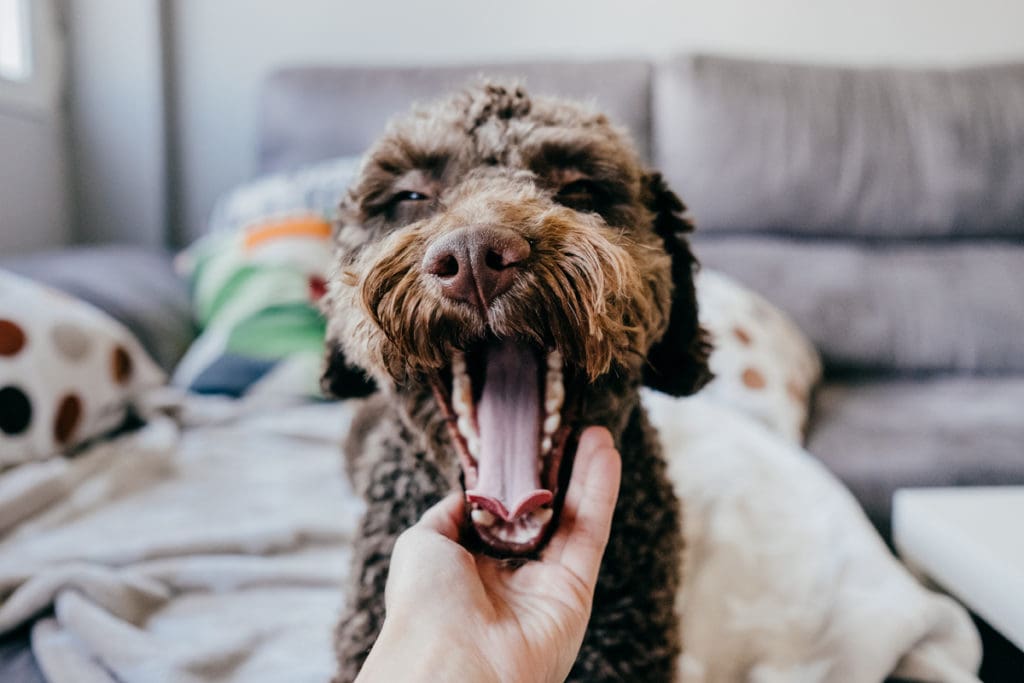Understanding the subtleties of doggy language
Dogs are always telling us how they’re feeling by giving us clues and signals. Taking a little time to understand dog body language and learn about the physical insights your dog is giving you is time well spent.
Apart from the well—known behaviour signals such as barking, whining, scratching, licking, stealing food etc. there are other, far more subtle ways that they communicate with us.

It’s always worth remembering to look at the whole of your dog and the context of the signal as one signal will almost always be accompanied by others.
There’s so much out there to explore but here are a few things to get you started.
Remember, if you’re concerned about your dog’s behaviour or wellbeing, it’s vital to get in touch with your vet who can recommend an animal behaviourist.
Mouth
Often overlooked, a dog’s mouth is an excellent indicator of what or how he or she might be feeling. A nice relaxed mouth means all is well but some of the following signals are a heads-up that something’s up.
Straight line
Look for tension in the lips; it can sometimes look like a straight line from the side. It could mean that your dog is nervous, tense, stressed or fearful.
C-shaped mouth
Be watchful for grimacing which can often look like a ‘C’ at each corner of the mouth and again, can indicate that your dog is uneasy about something.
Panting
A tongue that’s long and hanging out the side or extending to the front of your dog’s mouth, accompanied by some panting generally isn’t anything to be concerned about. Stress panting is another thing entirely and is usually accompanied by a tension in the tongue. You may see it on a visit to the vet or on car journeys.
Lip licking
This could be a sign of displacement where your dog feels under stress but doesn’t know what to do about it. It’s a tricky one to determine as it could also be an anticipatory action; for example, in anticipation of a treat so as always, look at the context and go with your gut.
Yawning
It’s rare to see a dog yawning if they’re properly relaxed so a yawning dog is generally dealing with some form of stress. For example, if you’re handling them and are a bit too close and are invading their space, you’ll probably see a yawn and a turn away.
If you try and give a dog a hug and they yawn, try to move away or avoid eye contact, it’s time to stop. Give them some space and the choice of how they’d like to interact with you because there might be other forms of physical contact they do like!
On the other hand, a dog that’s just rolled out of bed, goes in for a good stretch and a big yawn is more likely to be shaking off a nap than stressed. While it’s always good to be concerned about your dog’s welfare and stress levels, you should also keep looking at context for their dog body language.
Mouthing
Puppies do this a lot and the reason why is that dogs use their mouths to process lots of information and chewing or ‘mouthing’ is a way to self-soothe. A puppy that’s new to the world and everything in it is processing a huge amount of information and their adorable but unrefined brain doesn’t yet know that chewing on a toy is just as good as chewing on your arm or hand. Instead of telling your puppy off for mouthing, teach them more appropriate outlets, such as offering them a toy or chew at challenging times.
Ears
Dogs move their ears in many different ways but when they’re happy, they almost always sit forward, telling you that they’re listening and interested in what’s going on.
Unhappy ears carry tension and will almost always be drawn back on the head. It looks wrong and will also create visible stress around the face with ridges around the eyes, or that ‘worried’ eyebrow look.
It’s well known that a dog’s hearing is far sharper than ours and they’ll have clocked the bin lorry or thunder in the distance long before our ears alert us. So, if they’re reacting to something that you can’t hear, it doesn’t mean it’s not there and their dog body language will help you decipher whether they’re just interested or stressed.
Eyes
Squinting
If your dog is squinting or the eyes are narrowed, they could be telling you that they’re worried about something. For example, when you try to take a photo of them, you’ll probably be leaning forward and staring at them while holding something strange close up to them. So, don’t be surprised if they squint and move away.
Whale eye
This is where you can see more than a normal area of white in the dog’s eyes and indicates a high level of stress. This might also be accompanied by turning their head away and repeatedly avoiding eye contact.
Body tension
Ideally, you want your dog’s outline to be bendy, curvy and soft. A dog holding tension will have a rigidity to their body and you’ll see it in their outline through their shoulders, back and even into the tail.
Take a look at how your dog is standing. Are all four feet planted equally on the ground or is one foot slightly lifted? Perhaps they’re putting their weight all at the front or the back? An unequal distribution of weight may be that the dog is getting ready to move away due to being anxious. In the worst case, it could indicate that a dog is so stressed, that it’s ready to defend itself.
A dog that’s lying down could be mistaken for a relaxed dog but that’s not really the whole story.
A dog that’s lying down but is tense and panting isn’t relaxed or settled and a dog that’s lying down but is curled up into a really tight ball with wide, watchful eyes that are avoiding eye contact is definitely not relaxed. A happy and relaxed dog might still be curled up but it won’t be a tense ball of dog or it may be lying over onto one hip. The dog’s head will be resting down and the overall look of the dog will be soft and floppy.
Tail
The tail is another excellent tool to fathom how your dog is feeling. Most owners know how their dog usually holds their tail and also what its typical WPM (wags per minute) looks like. Some smaller dogs are truly impressive on the WPM scale and their tails can look like a blur, while larger dogs can still cut a good WPM speed but it’s not a patch on an excited Jack Russell!
However, it’s important to remember there’s a big difference between a dog showing excitement and a dog that isn’t coping with a situation. Look at the context of a rapid wag to guide your thinking.
With the exception of some sighthound breeds where tails are generally tucked underneath, happy dogs hold their tail aloft and relaxed and the all-important wag will be what you’re used to seeing. So sometimes, a super-speedy or unfamiliar wag could indicate that your dog is worried about something.
Also, if your dog isn’t a greyhound or whippet and their tail is tucked underneath or is bolt upright and stiff, it might be that something in their environment has worried them. Maybe someone has entered the room that they’re not sure about, or something has fallen over and crashed to the floor.
If you notice any signs of stress or anxiety in your dog body language, you should give them the space they need to regain their composure. Never pursue or chase a dog that’s backing away from you but, if appropriate, try reassuring them verbally and then physically, if they seek it.
Help support our life-changing work...
Imagine if everyday tasks were so challenging or physically demanding they affected your quality of life. For many people living with a disability of families with a child with autism, that is their reality. Now imagine if a specially trained four-legged friend could restore your, or your family’s, independence.
The demand for our services is high and we can’t help as many people as we would like to without more funding. Please help us continue to bring people and dogs together to help make everyday life possible in so many extraordinary ways.
Every contribution, whatever size, is important and helps us make a difference.

